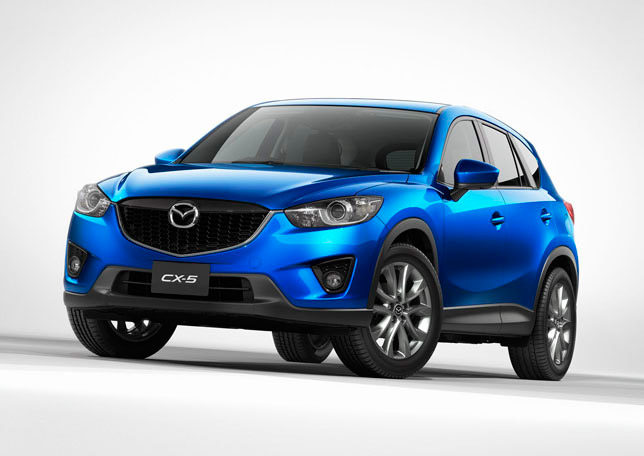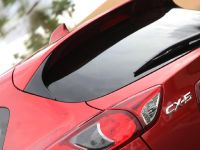Mazda CX-5 SUV with world's lightest bumpers
World's lightest bumpers are going to be used in the design of the all-new Mazda CX-5 SUV. Mazda Motor Corporation in collaboration with Japan Polypropylene Corporation has developed, resin material for vehicle parts that maintains the same rigidity as parts made with conventional materials while achieving significant weight reduction.
Thank to this material, the manufactured parts are now thinner. The effect of this results in significant reduction in the resin, which is required to manufacture parts. In addition, when the material is used for both front and rear bumpers, it contributes to weight reduction of approximately 20%. Hence, the bumper has reduced thickness which allows a shorter cooling period for molding. Furthermore, by using computer-aided engineering (CAE) technology, the fluidity of the resin material has also been optimized. The result of this is that the bumper molding time, previously 60 seconds, has been halved to 30 seconds, leading to major reductions in the amount of energy consumed in the production process.
Further to be mentioned is that Mazda plans to adopt the lightest bumpers in the class using this resin material. The company is going to feature it in the all-new Mazda CX-5 SUV which is going to go on sale this spring. Other models are considered for such modification too. In details, the bumpers are positioned at the very front and rear end of a vehicle. More importantly, their weight has a major impact on fuel economy and driving performance. On the other hand, bumpers are multi-functional, requiring both rigidity to absorb impact, and molding and painting properties suitable for great exterior design.
The constituents of resin are two components found in polypropylene and rubber. They have different properties, and are successfully included in the double-layer structure in line with the required function for the surface and the inside of the base bumper material. As a result, the surface has excellent paint film adhesion and the inner section retains high rigidity and impact absorption, with actually reduced thickness. Mazda Motor Corporation will remains committed to the aim of reducing vehicle's weight and improving dynamic performance.

Source: Mazda


















